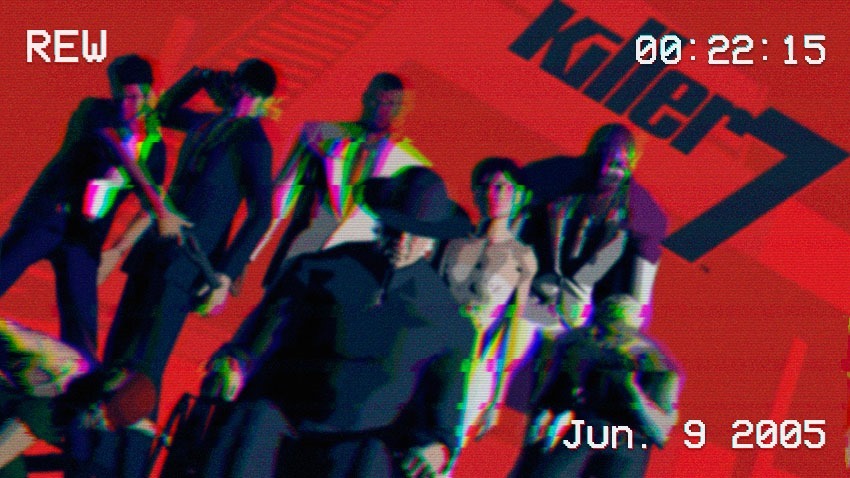
Every month one of our writers has a look at a gem of yesteryear that we didn’t review on release. This week we take a look at the dark, surreal offering that broke Suda 51 in the West.
Over the last decade or so Goichi Suda – or Suda 51 to you – has established a reputation of being something of a merry prankster in the gaming industry. Between conducting interviews on the toilet to being deliberately obsequious in interviews, the Japanese game auteur has become known for games that poke fun at both the medium and its players, while being very entertaining.
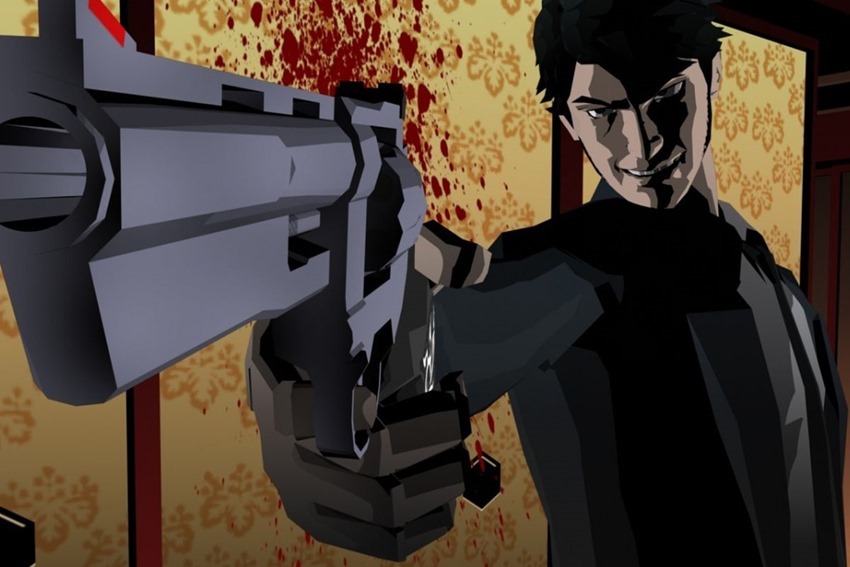
He’s probably best known for the No More Heroes series, in which a bespectacled otaku, Travis Touchdown, lays waste to world-class assassins using a lightsaber beam katana, while also being tasked with menial trash jobs. But Suda 51 has also overseen a slew of other irreverent games, including Lollypop Chainsaw (think Buffy armed with… well, a chainsaw taking down zombies instead of vampires), Diabolical Pitch (in which a baseball player tackles a sinister funhouse of horrors with a baseball) and Shadows Of The Damned (think action-focused Resident Evil with dick jokes).
All pretty light-hearted stuff, if a little twisted in parts. But 100 years ago, back in 2005, Suda 51 produced a game for the PS2 and GameCube that was a good deal darker than anything he’s made in the years since: killer7. It shares a lot in common with Suda’s work after that time – it’s quirky, stylish and pretty hard to pigeonhole – but it bears none of the knowing winks and sarky in-jokes that characterise his best-known games. It’s also, arguably, the most eccentric game Suda 51 has ever produced – and anyone familiar with his oeuvre will know that killer7 is up against some pretty stiff competition in this regard.
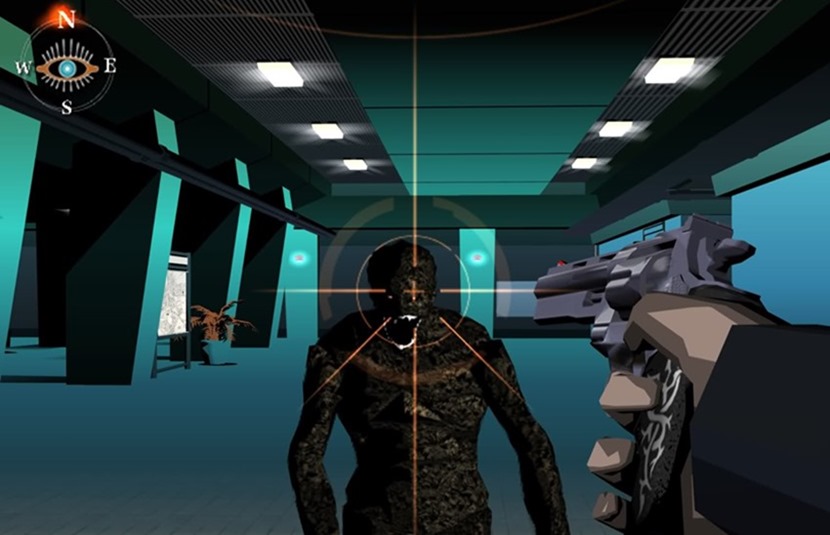
One’s initial impression of the game is that it’s a mess. To be frank, it’s something of a miracle that Capcom ever let it out the door to begin with and it’s safe to say it wouldn’t stand a snowball’s chance in hell of ever being released by a Triple A publisher today. The fact that it boasts swoon-worthy cel-shaded presentation wouldn’t save it. The reason for this is because killer7 is ‘capital W’ weird.
At its heart, killer7 is a linear corridor shooter, but its controls are
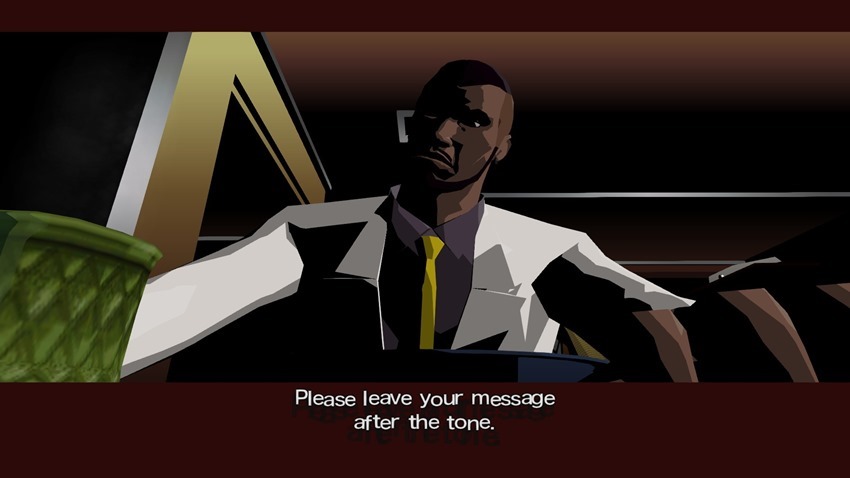
When players are faced with an enemy they plant their feet in the ground and scan for targets who approach them at varying speeds. Triangle locks, X fires, square zooms or charges attacks, circle counter… you following all this? Traditional FPS controls are tossed in a rubbish skip and players need to unlearn any smooth, familiar patterns they’ve enjoyed in nearly every other shooter ever made. The fact that enemies are initially invisible and announce their presence with high-pitched hysterical laughter adds to the disorientation. Players have to scan the area to find them – which can be problematic since some of them may be hidden from view or, you know, right behind you – and once they appear their ghoulish smiles are enough to prompt chills.
In this rather alarming space, players are encouraged to study their macabre targets; simply blasting one to bits earns Thin Blood, which replenishes health but a direct hit on a highlighted weak spot (earned through a second scan) earns Thick Blood, which players can use to upgrade characters over the categories of Skill, Speed, Waver and skills specific to each entity). While that sounds straightforward, it’s hard to keep all that in mind when a bunch of grinning, laughing suicide bombers are shuffling towards you. The whole shooter experience in killer7 is both rock-hard and hellishly unnerving.
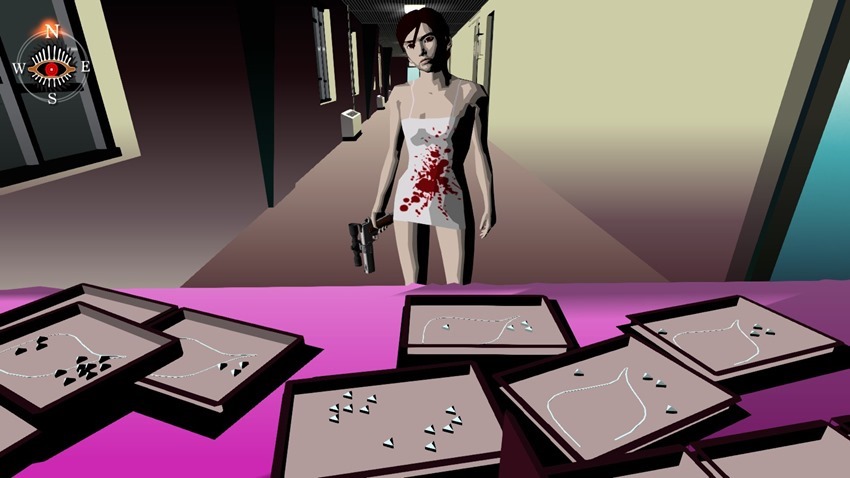
The smiles and laughter, incidentally, emanate from soldiers who belong to a terrorist group called Heaven’s Smile, a bunch of walking bombs that plague the player throughout killer7. This nicely dovetails into the second hurdle players of more conventional games are expected to jump if they want to enjoy the game: its absolutely batshit insane plot.
To say the game’s story is eccentric is an understatement. To be frank it makes the works of David Lynch during his Lost Highway/Mulholland Drive/Inland Empire period look positively straight-forward by comparison. The titular killer7 are seven elite assassins, all sharing the surname ‘Smith’. If you want the full rundown of the team members and their backstories, naturally there’s a wiki. It would be remiss to reveal too much about the ‘Smith Syndicate’ here – after all, mystery is the most valuable card in killer7’s hand – but for the purposes of the core experience, each ‘Smith’ brings something new to the party.
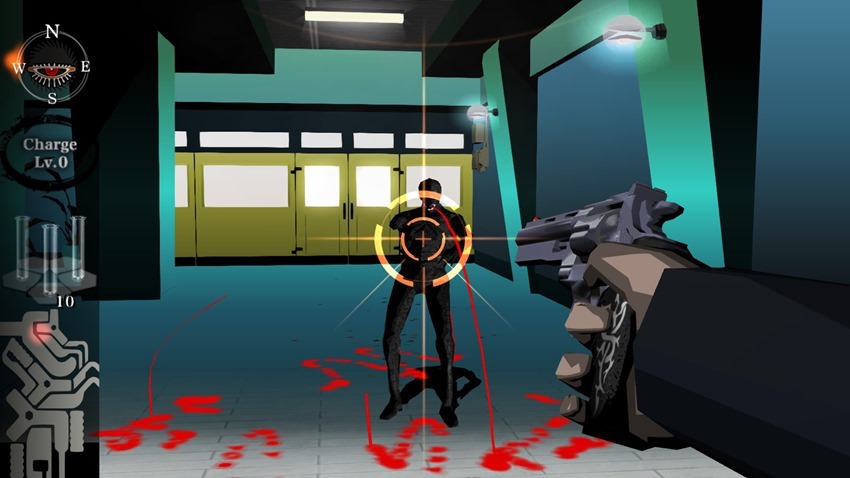
Kaede Smith, for example is the only one in the bunch who has a zoom lens on her weapon. Kevin Smith (no, not that one) can turn invisible. Coyote Smith can pick locks and reach high-out-of-the-way places his comrades cannot. MASK de Smith has a bloody big shotgun. Perhaps the most valuable of the bunch is also the one players use the least in the game, Garcian Smith; his ability to resurrect any of the others who are killed is invaluable as killer7, unsurprisingly given its age, is decidedly old school – as in “Game Over means you had better have been saving your game” old school.
From an action-based perspective, the seven ‘Smiths’ throw a neat wrinkle into the mechanics. From a plot perspective… well, once you find that the Smith Syndicate is, in actual fact, controlled by a wheelchair bound old man named Harman Smith who is able to splinter his personality into the seven assassins in order to save the world from Heave… you still following all this? Harman’s reveal, by the way, isn’t even the best twist in the plot.
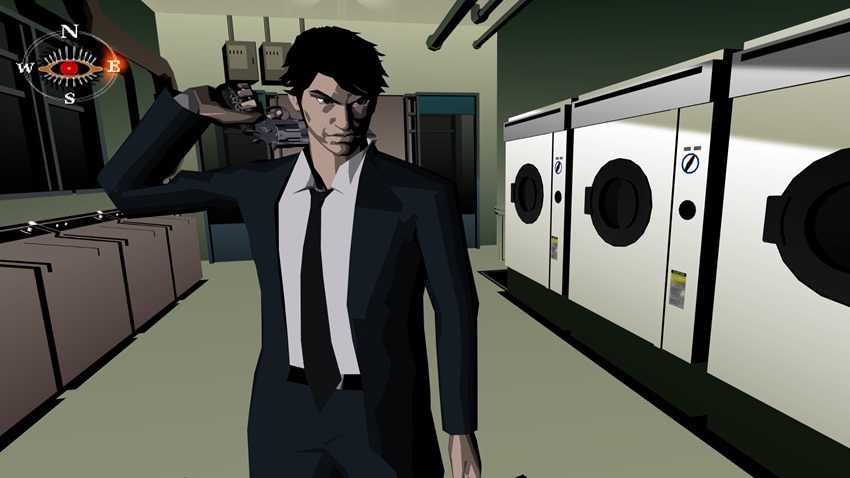
The game is a character-driven story that doles out its information in bite-sized chunks initially. It’s easy to dismiss it all as self-indulgent claptrap on the part of Suda 51 – one can’t blame players for quitting in frustration early on – but if obfuscation if your bag, killer7 is a rabbit hole worth tumbling down. There are no easy answers here, though. The story isn’t neatly tied up with a ribbon by the end and a lot is left open to each player’s interpretation of the events they’ve witnessed.
So killer7, then, isn’t for everyone, but it’s hard not to admire it even if one can’t or won’t succumb. It’s surreal, beautiful, frustrating, awkward, pretentious, intriguing; one could go on listing the adjectives that describe it for days. But what’s clear from beginning to end is that killer7 is the product of an uncompromising vision and that’s as rare as it is refreshing. One wonders, though, what was going through Suda 51’s mind at the time he developed this gem. Whatever it was, he probably knows it would be pragmatic not to return to it, because in the current landscape, we probably won’t see killer7’s like again.
The views and opinions expressed in this article are those of the author(s) and do not necessarily reflect the official policy or position of Critical Hit as an organisation.
Last Updated: March 1, 2019




















